













The magazine of the art-form of the photo-essay
“A free, really high quality photo-essay magazine. Fabulous!”
Stephen Fry. British actor, writer and film & documentary maker

June 2014 back issue



by David Creedon
Trapped between traditional society and modernity, Cuba is a country caught in its own history. The common clichés
of 1950 automobiles and crumbling architecture have all reinforced a stereotype of Cuba as a vestige of the cold war,
a place where ghosts of the past still haunt the present. A lack of knowledge and understanding of the country’s
historical narrative have added to an unbalanced view of Cuba as a tormented purgatory. This perspective ignores the
legacies of colonial empire and hegemonic governance whose influence still pertain today.
The struggle for Cuban national identity is a complex and prolonged affair dating back to the 1492 when Cuba became
under direct control of Spain. The countries strategic position in the Caribbean made it an ideal stopping off point in
the transportation of wealth from the new world to Europe. Until the mid 20th century, the country at various times had
been under the control of Spanish and British Empires as well as the United States.
The countries history has resulted in the former slave colony becoming a multi-ethnic nation. Because of the diversity
of those who came to the island, the different ethnic backgrounds have provided the country with a rich cultural
influence of European, American and African traditions. Cuba’s national identity is a hybrid of all these influences and
provided its people with its own sense of belonging.
The portraits from this series document people of Cuba in their home environment and capture scenes that are
reflective of their character not normally seen. One becomes aware that these people still retain family values and a
richness of life that would appear to be disappearing in the more affluent western societies. Families are tight knit
groups as they share rooms or houses in close proximity. Rooms can be quite small and are in contrast on some
occasions to the relatively more grandiose old colonial structures. Family units often consist of grandparents, parents,
uncles, aunts, teens and children. They support each other in such a way as to create a culture of emotional trust
and security. This mutual cooperation and care became evident as they invited me into their homes and displayed a
patience and ease as I went about my work. Despite the external condition of some the buildings, on the whole
interiors are very well kept and spotlessly clean. Visiting various homes throughout the country you find that Cubans
are very welcoming and you will be treated more like a long lost relative than a complete stranger. The generosity of
the people is quite evident and they are willing to share what little they have with you with offers of coffee or
something to eat. The strength of any country is in its people and despite over fifty years of sanctions as well the
hardships experienced during the Special Period the Cuban people are resilient as well as having dignity and spirit.
The Cuban people are very proud and take great pride in their independence. A young lawyer when asked the
question that everyone asks in the West, “What will happen when Fidel Castro dies?” Her reply was, “I hope we don’t
turn into another Puerto Rico.”
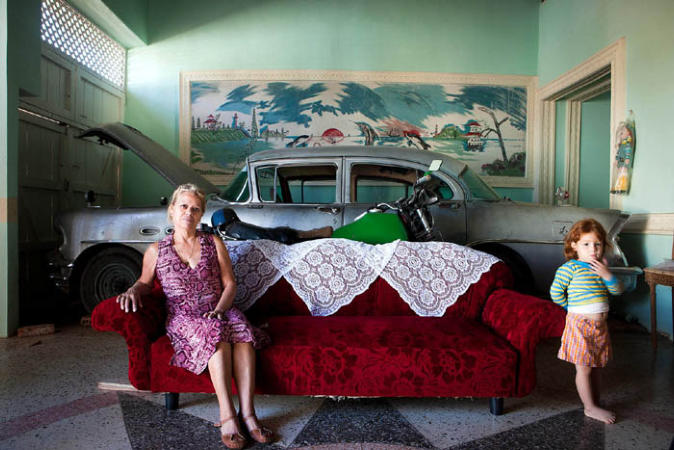
Fidelia and Maria Sandual, Trinidad. Sancti Spíritus
Today is Maria’s birthday and there is some excitement as she will have a party later on in the day. The house is
deceptive and looks small from the outside when you see it from the narrow cobblestone street of J.A.Mella y
Menendez. Inside, the house stretches way back and Fidelia is presently having it renovated and converting it into a
luxury Casa to cater for tourists. She is presently putting in a swimming pool for her guests and on the top floor is a
roof garden that will be a restaurant. Since 2010 there have been a number of regulatory changes with regard to
private enterprise and Cubans are now encouraged to open up small businesses and since they were implemented
it is estimated that around 400,000 people are now working for themselves. The automobile is a 1950s Buick
Century so called because it was the first production mode l that could reach a speed of 100 mph.
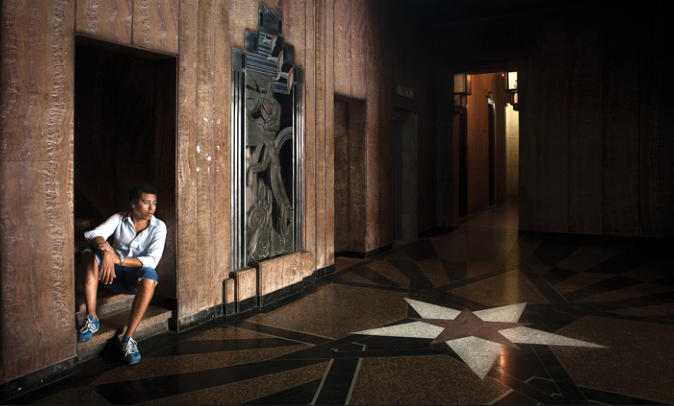
Orlando sits in the art deco lobby of the Lopez Serrano Building in Havana. Located on the corner of calle 13 and L,
Vedado, the building was the first skyscraper in Havana and completed in 1932.
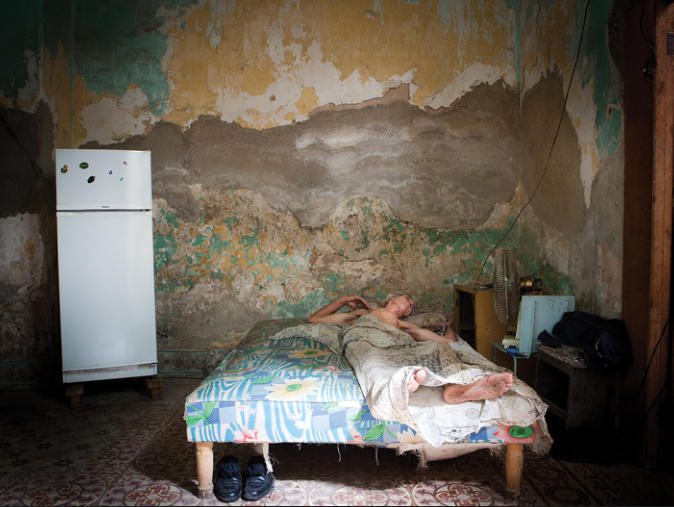
Luis Pantaleon, 60, Centro Habana. Luis takes an afternoon siesta in his small apartment which he shares with his
brother.
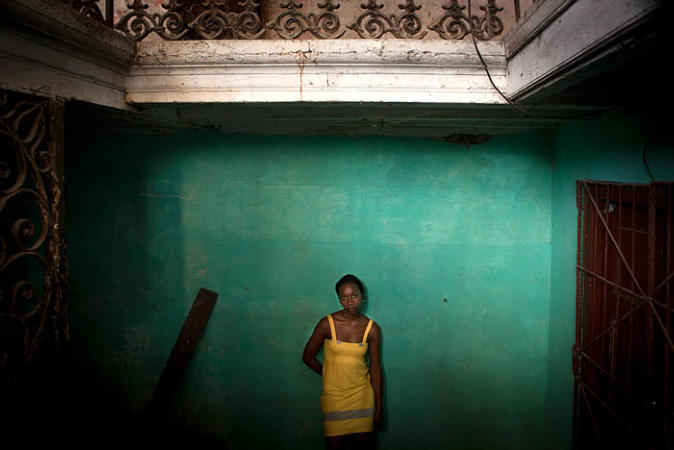
Kenia is 18 and still a student. She hopes to continue her studies and hopes to be a lawyer. There is an excellent
education system in Cuba where anyone can study up to Phd level free of charge.
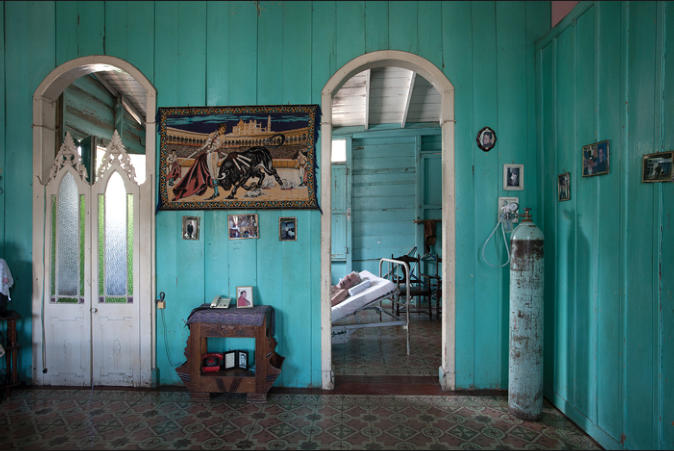
Vicente 87, Catalina de Guines. Vincente is in the final stages of dementia and is cared for by his daughter who is
also caring for her bedridden mother. Even though he can’t communicate and suffers from memory loss his
daughter has placed him in the doorway so he can still be a part of family life.
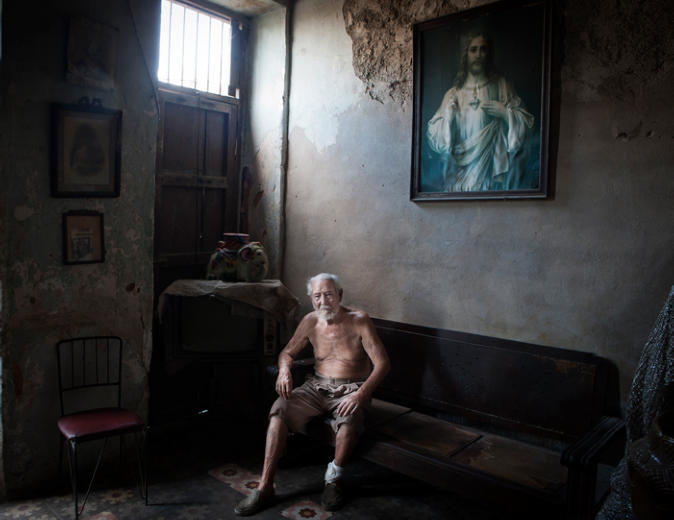
Lazara Manual de Dios, Centro Habana. Lazara is 89 and lives in centro Habana with his family. The family unit is
very important to Cubans and can often consist of grandparents, parents, uncles, aunts, teens and children. At
present seventeen per cent of the population are over sixty and life expectancy is comparable to many developed
western countries. Cuba’s aging population is attributed to their universal health care system and life expectancy
has increased to an average seventy eight years.
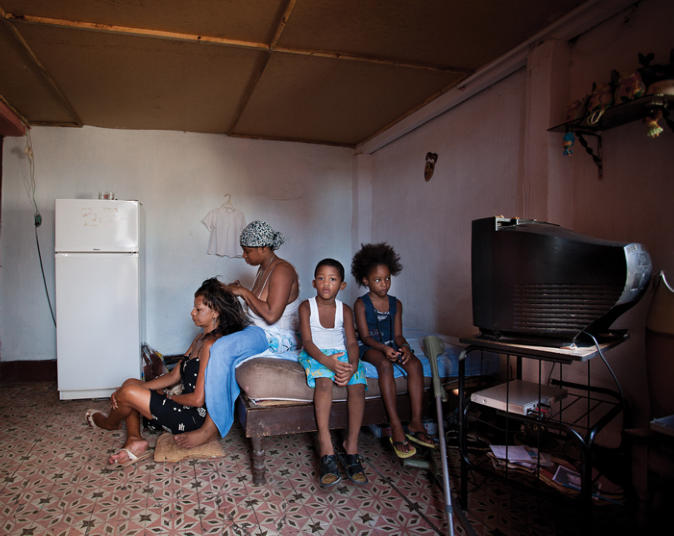
Kirenia, Odelin, Nortis, Marian, Sol Street, La Habana Vieja. Odelin does her neighbours hair as her two children
watch television. Community spirit is quite evident among the Cuban people where co-operation between
neighbours is a matter of course.
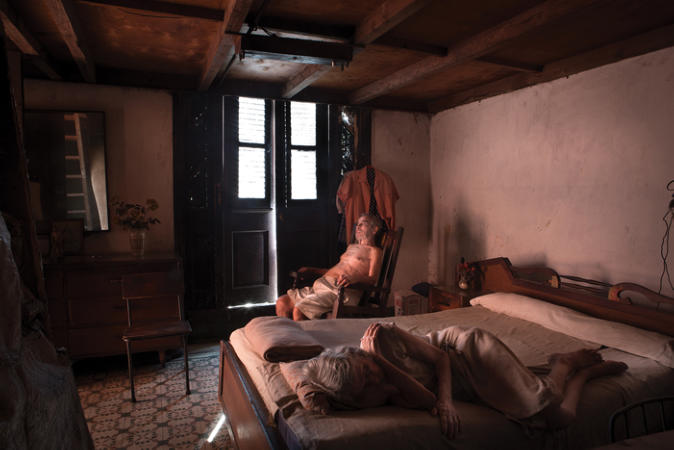
Maria and Raul, Paso Marti Centro Habana. Maria is taking an afternoon siesta while her husband Raul rocks
gently in his chair. There is a sense of tenderness and a bond between the pair and both seem comfortable
together. Raul is blind and Maria looks after all his needs but in some way Raul is now Maria’s guardian, protecting
her vulnerability as she sleeps. The couple were married in 1959, the year of the Revolution, and have lived for most
of their lives in this apartment. The one room apartment on the Paso Marti Centro Habana is extremely small and
the living space also doubles as the bedroom and kitchen. In December 2012 after a short illness Raul passed away
and within six months Maria died.
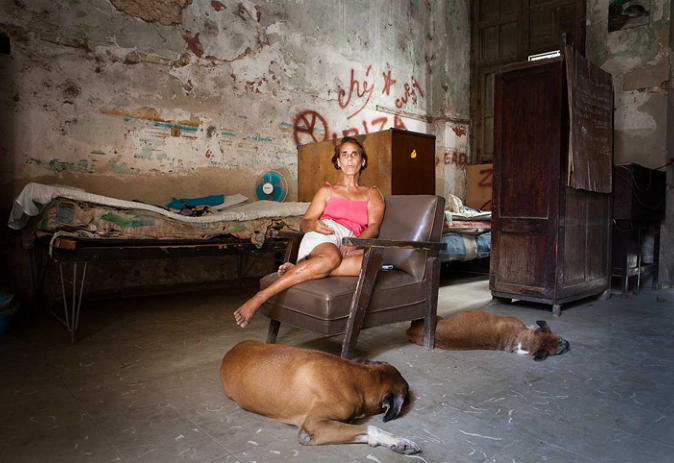
Maria Mercedes 49, Damas, La Habana Vieja. Maria sits in her apartment in La Habana Vieja while her two dogs
sleep. The room doubles as a living and sleeping area. On the wall is graffiti with the words ‘Che’ and ‘Ibiza’.
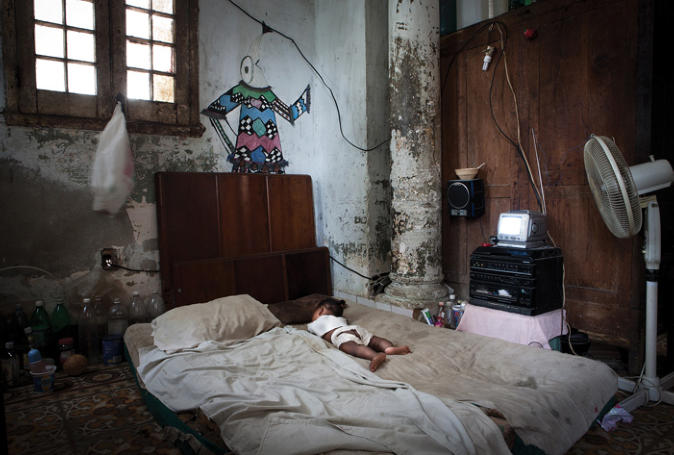
David de Dios Hernandez, 1 year old, Diaz de Octobre. David is twelve months old and sleeps while a fan keeps
him cool in the afternoon heat. The wall Murielthat hangs on the wall is a symbol of masculinity. Statistics from the
United Nations Children Fund, released in September 2012, show that Cuba has an infant mortality rate of 4.6 per
thousand live births the lowest in Latin America and mortality for children 1-5 years of age to 7.0 per 1,000, which
ranks Cuba in thirtieth place among 194 nations and first in Latin America.
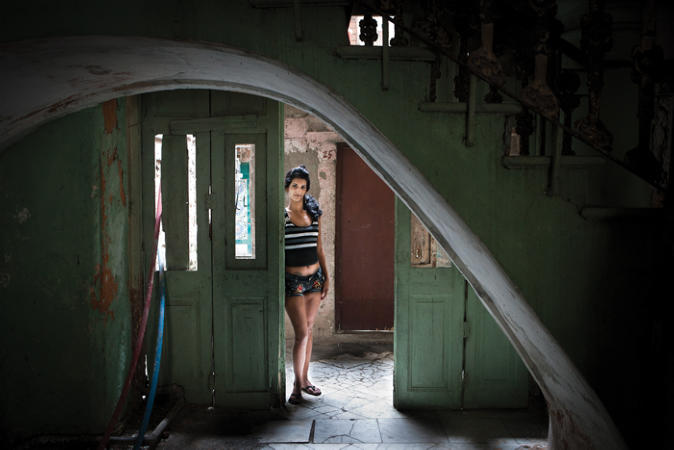
Yurisley, 22, Prado Street. Yurisley is unemployed and lives with her family on Prado Street in Centro Habana. In a
country where nearly everyone works for the state unemployment has recently become an issue in Cuba with the
layoff of government employees. Former state employees are now encouraged to open up small businesses and
since the new regulations were implemented it is estimated that around 400,000 people are now working in the
private sector.
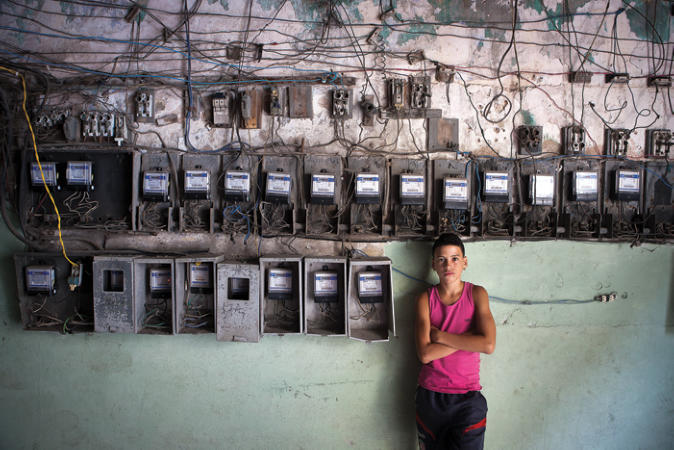
FJordenis Ortiz, 13, Centro Habana. Electric meters in hallway’s of apartment buildings are a common sight in
Havana. The apartment buildings are a playground for young children and no notice is taken of the obvious health
and safety dangers that are abundant in these buildings.
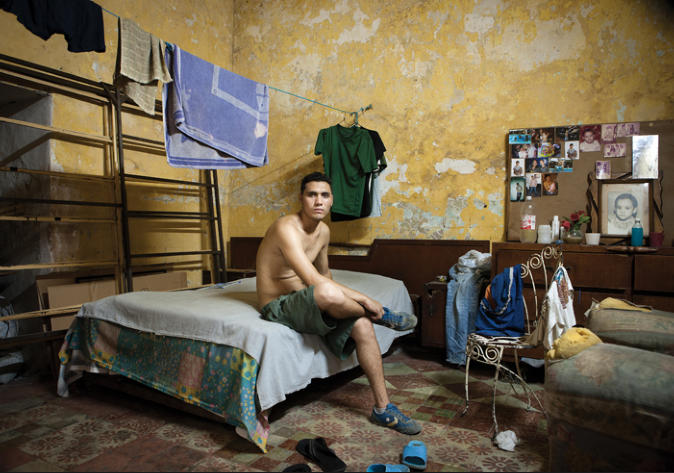
Jose Luis Sobrino Leon, 26. Jose Luis lives in this small apartment in La Habana Vieja. He has two children who
now live with their mother. Behind him are photographs of his family who all now reside in the United States.
Migration to economically richer countries helped Cuba during the special period by taking pressure off the economy.
Economic factors are cited as the main reason to leave the country in order to improve their life and that of the
family. Cubans have traditionally travelled to the United States but in recent years an increasing number are
travelling to Europe and in particular Spain. Remittances sent to relatives at home have provided a vital lifeline with
everyday living and also acted as a way for emigrants to maintain family ties. It is estimated that in 2011 over $2.3
billion dollars in remittances were sent home by the Cuban Diaspora to family members.
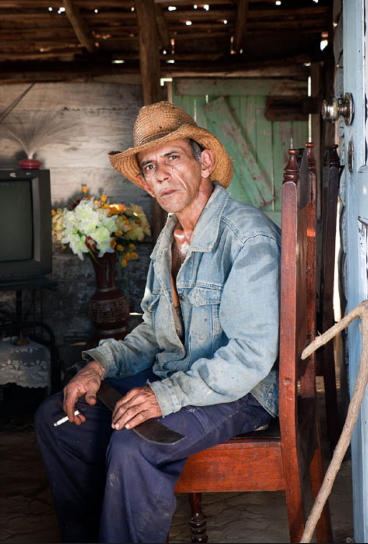
Miguel Angel Sanchez, 52. Miguel’s skin glistens from sweat
as he sits down to enjoy a cigarette. He has just returned home
from working in the fields where he has been cutting grass with
a machete and wooden gancho which he uses as an aid in pull
the grass that has been cut out of his way.


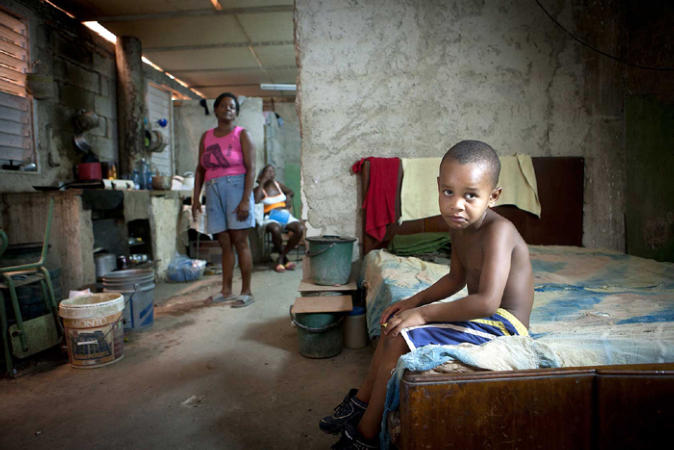
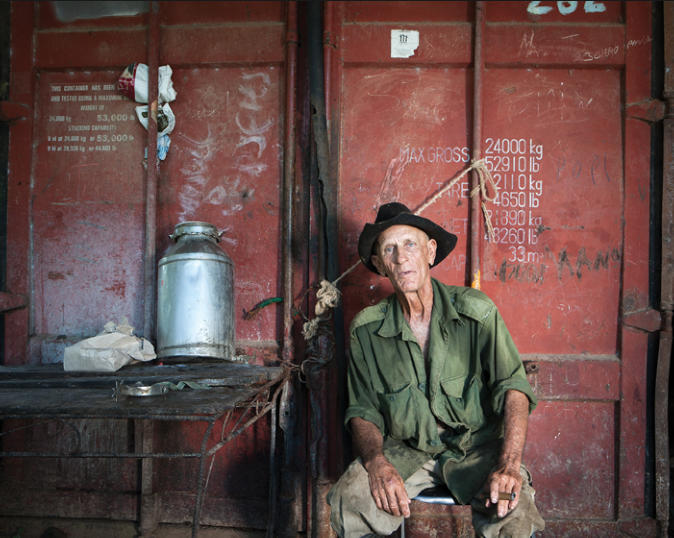
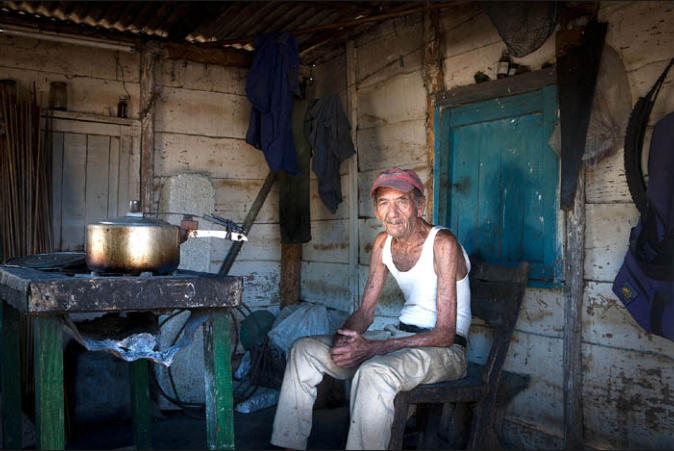
Luis Alberto Rodriguez.
Antonio Rodriguez Diaz, 67, Guines Cuba.
Alfredo Rodriguez.










